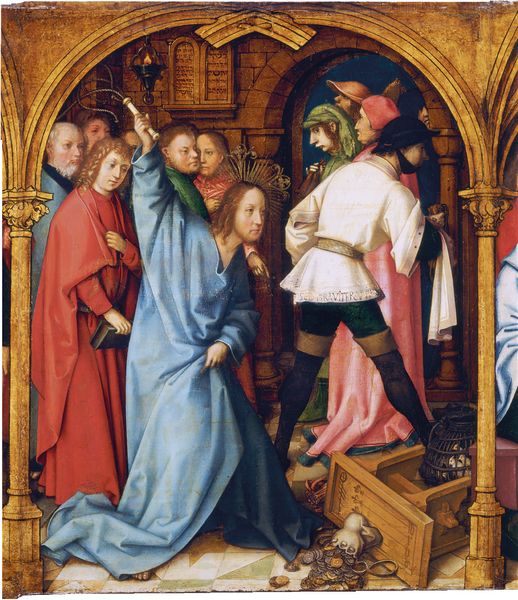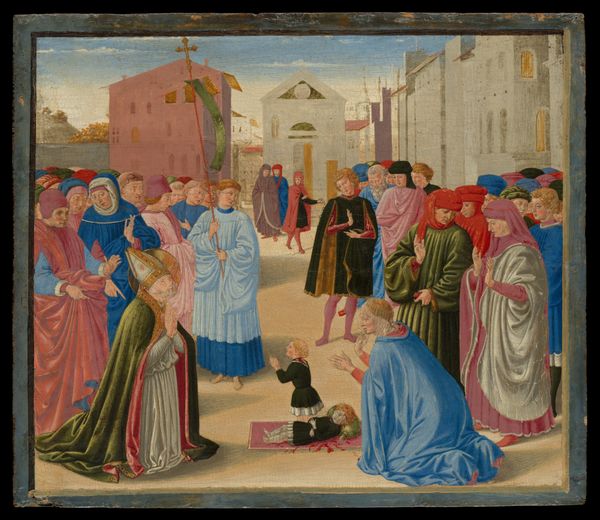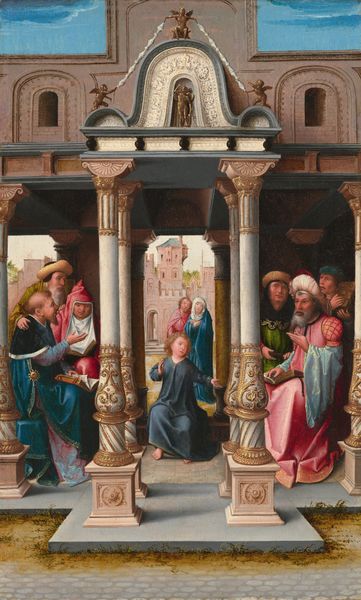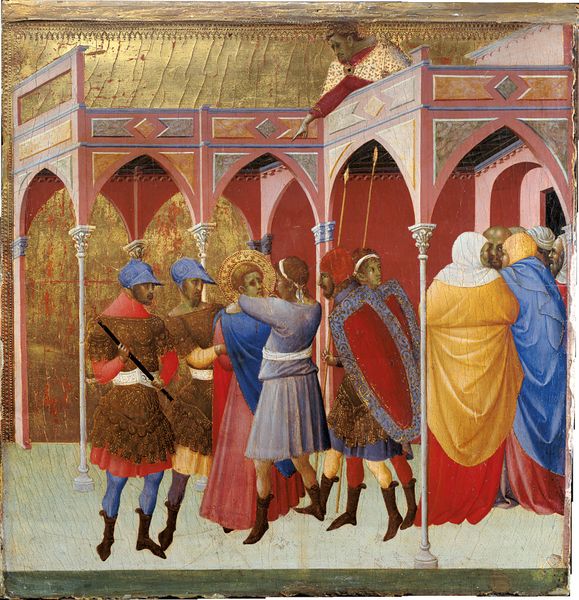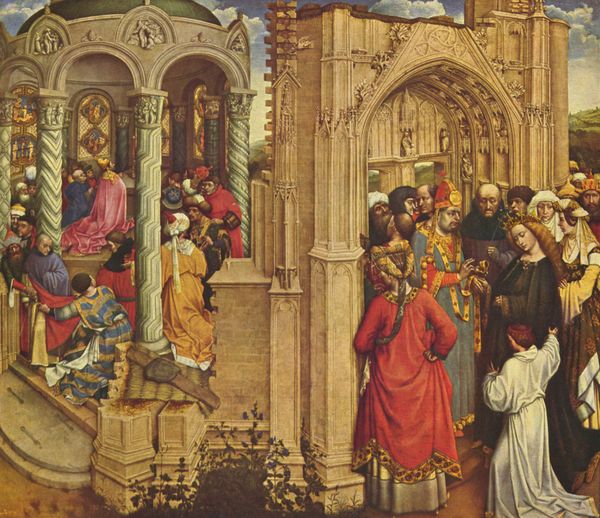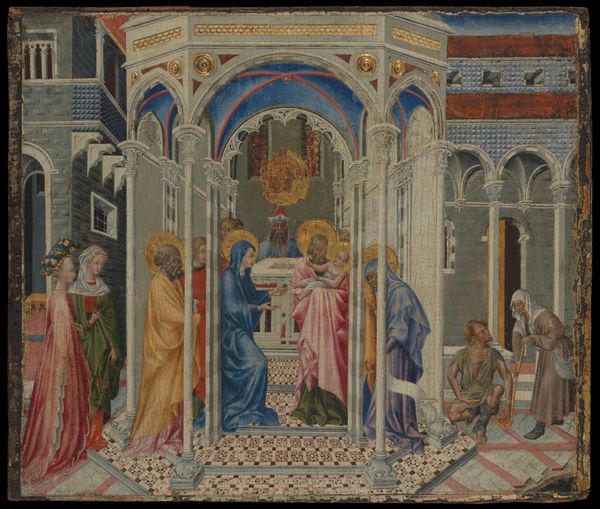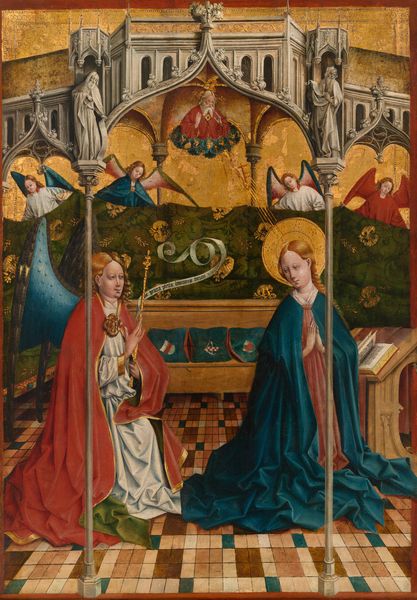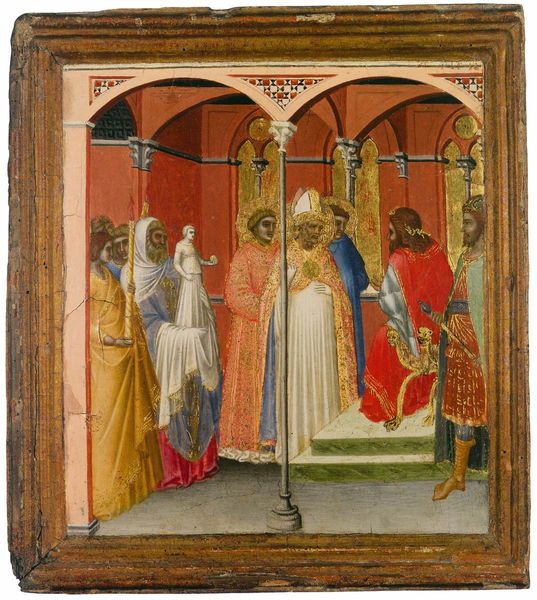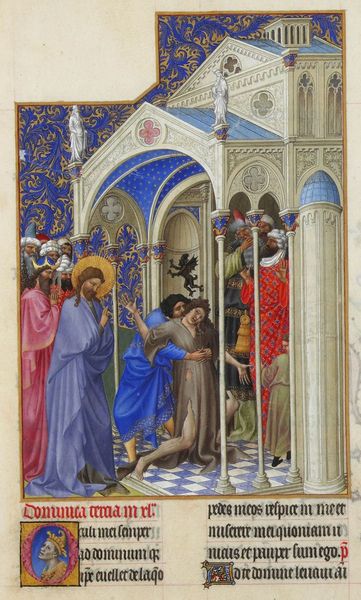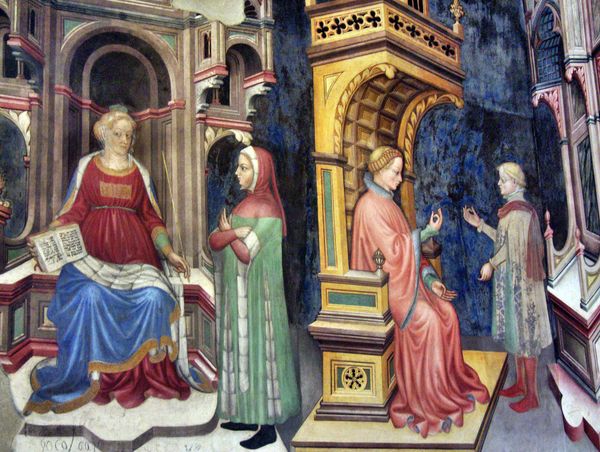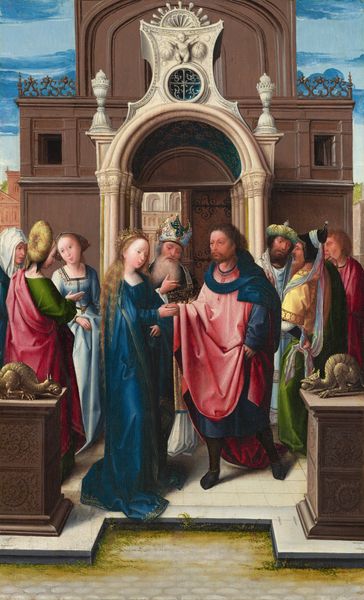
painting, oil-paint
#
narrative-art
#
painting
#
oil-paint
#
figuration
#
oil painting
#
history-painting
#
northern-renaissance
Dimensions: support height 97.3 cm, support width 68.5 cm, sight size height 97 cm, sight size width 68 cm, frame height 118 cm, frame width 89.5
Copyright: Rijks Museum: Open Domain
Curator: Immediately, the atmosphere strikes me as deeply unsettling; it’s like a nightmare frozen in oil paint. Editor: Indeed, the scene is quite dramatic. What we are looking at is believed to be "Augustine Sacrificing to an Idol of the Manichaeans (?)", an oil painting dating back to around 1480 by Aert van den Bossche. Curator: Manichaeans…that rings a bell. It has something to do with good and evil, right? Is Augustine participating, or observing? He certainly stands out front, with his opulent red and gold clothing. Editor: Well, the Manichaeans believed in a dualistic cosmos of good and evil. Saint Augustine was, in fact, a follower of Manichaeism for almost ten years before converting to Christianity. The painting seems to depict Augustine's early, misguided faith. See the gold idol being worshipped with animal sacrifice. The architectural background appears distinctly Northern European, reflecting the artist's cultural context rather than any historical setting relevant to Augustine. Curator: I notice the varied expressions in the observing crowd. Some seem entranced, some are playing instruments, others…are wrestling a goat! It’s so bizarre. Is it commentary on the religious fervor of the time or a more personal statement by the artist? The painting is crowded, busy...chaotic even. Editor: I find this painting incredibly valuable for what it tells us about the visual culture of the late 15th century. Bossche has woven an intricate tapestry of ritual, belief, and cultural symbols that allows us glimpses into the social and spiritual mindset of the time, a moment on the cusp of reformation. This scene also highlights how artists navigated representing historical or religious narratives for their contemporary audience, and what that might mean. Curator: I suppose you're right. Beyond the historical context, the idol's golden sheen continues to dominate, contrasting heavily with the pallid goat about to be sacrificed. The goat can't be a coincidence...the very image seems designed to incite an emotional, if not visceral, reaction, pushing us to feel Augustine’s future turn away from such practice. Editor: It certainly encapsulates Augustine's later rejection of the faith he once participated in. This painting serves as a potent visual reminder of Augustine's transformative journey. Curator: Quite so. I was initially put off by what felt to me chaotic and unsettling; however, thinking about this in light of religious journeys definitely allows new readings. Editor: Exactly. These works can show that some of our own biases of how the world "should" appear may impede our view of past cultural meaning making.
Comments
No comments
Be the first to comment and join the conversation on the ultimate creative platform.
